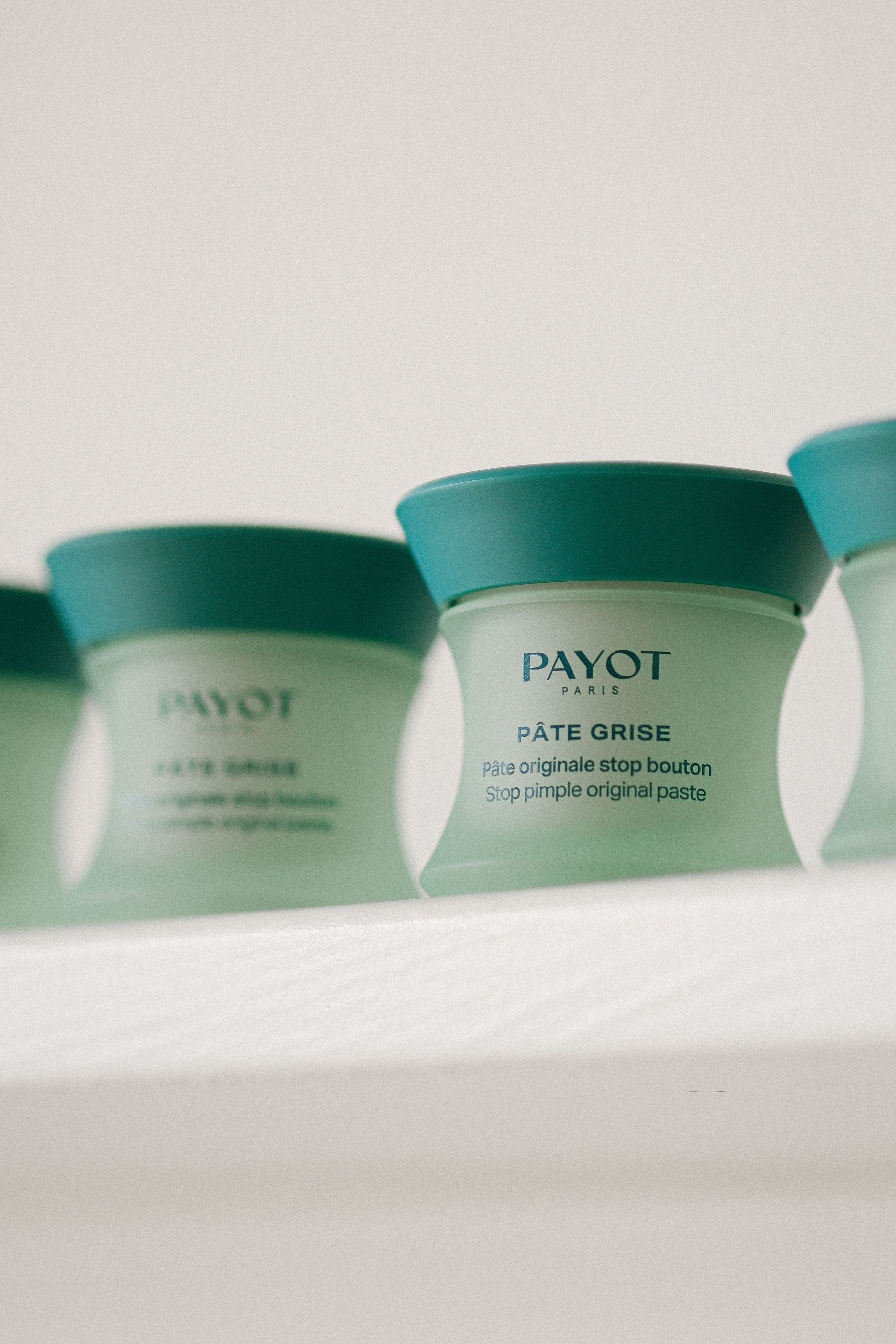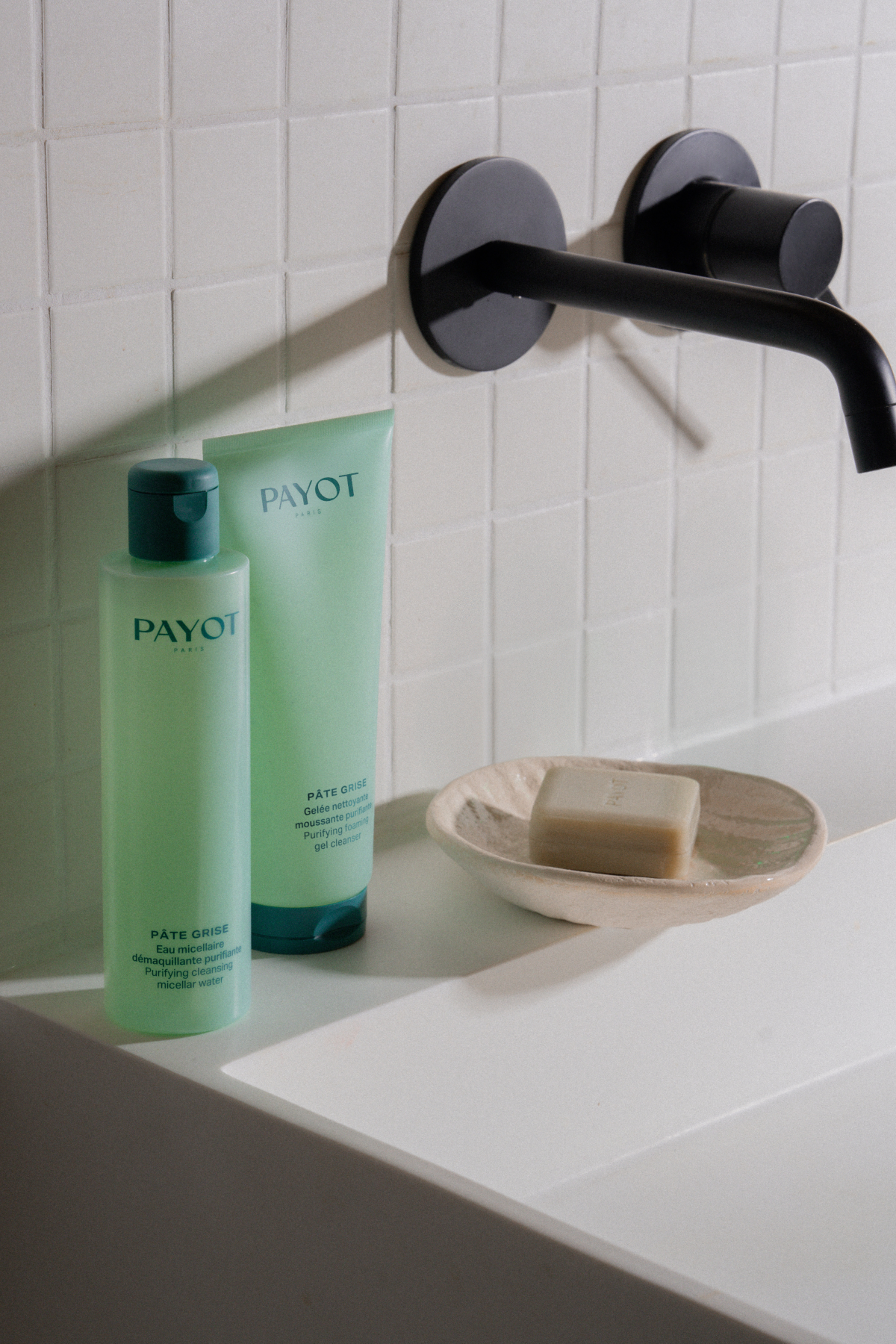
Blemishes can be caused by many factors: hormonal imbalance, changes in routine, or seasonal transitions. Identifying the root cause isn’t always easy, and finding a suitable skincare routine can often feel overwhelming. In most cases, blemishes are linked to excess sebum—a lipid-based (oily) substance naturally produced by the skin to protect it from external aggressors. When sebum production becomes unbalanced, it can clog pores and encourage the growth of bacteria.
-
Anti-blemishGray PasteNo reviews49,90 €/LRegular price 49,90 €49,90 € Regular priceUnit price / per
54,00 €Sale price -
ImperfectionsPâte Grise1 review108 €/UnitRegular price 108,00 €108,00 € Regular priceUnit price / per
135,00 €Sale price -
ImperfectionsGrey PasteNo reviews59,99 €/UnitRegular price 59,99 €59,99 € Regular priceUnit price / per
81,00 €Sale price -
ImperfectionsGrey PasteNo reviews59 €/UnitRegular price 59,00 €59,00 € Regular priceUnit price / per
61,00 €Sale price
Why does my skin produce more sebum?
For many reasons. The primary cause of increased sebum production is hormonal, but certain habits can also disrupt the skin’s balance. Using overly harsh cleansers, for example, can irritate the skin, which will react by producing even more sebum as a defence mechanism. That’s why it’s essential to use a moisturiser daily—even if you have oily skin.
To stay healthy, your skin needs both hydration (water) and lipids (fats). Many people mistakenly believe that oily skin doesn’t need moisturiser because of the greasy film that covers it and can be hard to manage. However, skipping hydration only makes things worse. We recommend opting for lightweight moisturisers such as emulsions or gel textures, which absorb quickly without weighing the skin down.
How can you prevent blemishes?
While certain skincare products are essential, adopting good habits can also help prevent new blemishes from forming. We recommend choosing non-comedogenic makeup, meaning it has been tested to ensure it won’t clog pores or promote breakouts.
Be sure to clean your makeup brushes regularly with a gentle soap to remove any bacteria that may build up. In the evening, practice double cleansing using a gentle makeup remover followed by a cleansing oil to ensure your skin is thoroughly clean and to clear out any impurities that may be blocking your pores—whether from sweat, pollution, or makeup.
Lastly, remember to change your pillowcase frequently, as blemish-causing bacteria can easily accumulate there.

How can you treat blemishes?
WITH THE PÂTE GRISE RANGE
Start by adopting healthy eating habits, including trace elements like zinc in your routine, or consider dietary supplements. It’s also wise to avoid ingredients known for their inflammatory properties.
As for skincare, look for active ingredients proven to target blemishes—such as glycolic acid. The Sérum Peeling Rénovateur from the Pâte Grise range, for instance, is enriched with glycolic acid to act both on blemishes and skin texture.
Use a gentle cleanser and exfoliate once a week to unclog pores, always favouring blemish-fighting ingredients. The Masque Purifiant Rééquilibrant, with its white clay–rich formula, is ideal for absorbing excess sebum and removing dead skin cells that can accumulate and block pores.
Summer, the false ally of blemish-prone skin
Does your skin feel smoother in the summer? Are there fewer blemishes? This is because your skin thickens when exposed to the sun to protect itself, leading to a rebound effect at the start of the school year with an increase in blemishes and sebum production. It's therefore important to continue using your usual routine and protect your skin with high protection so that your blemishes don't leave brown spots.
